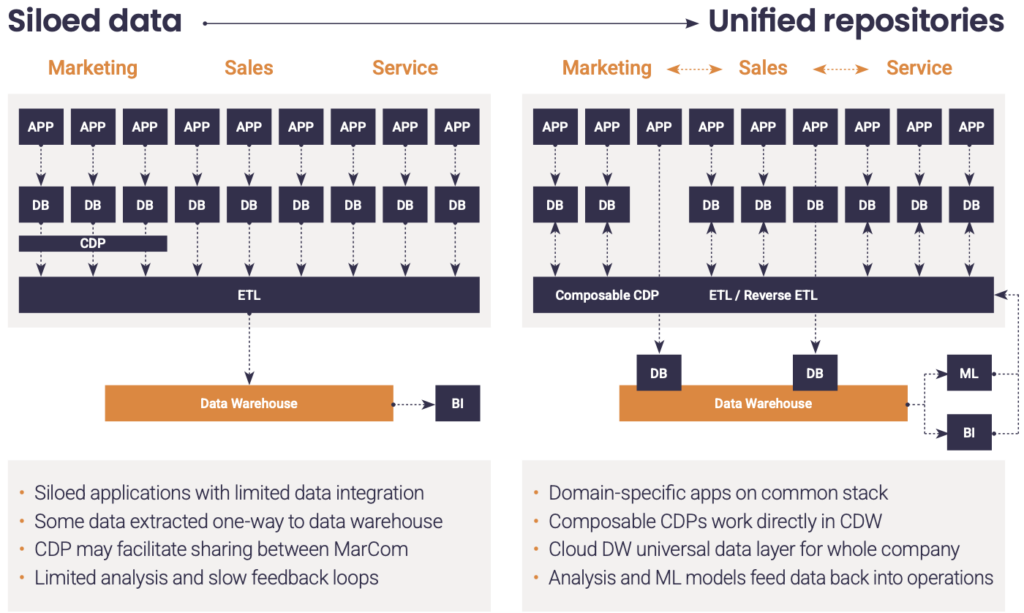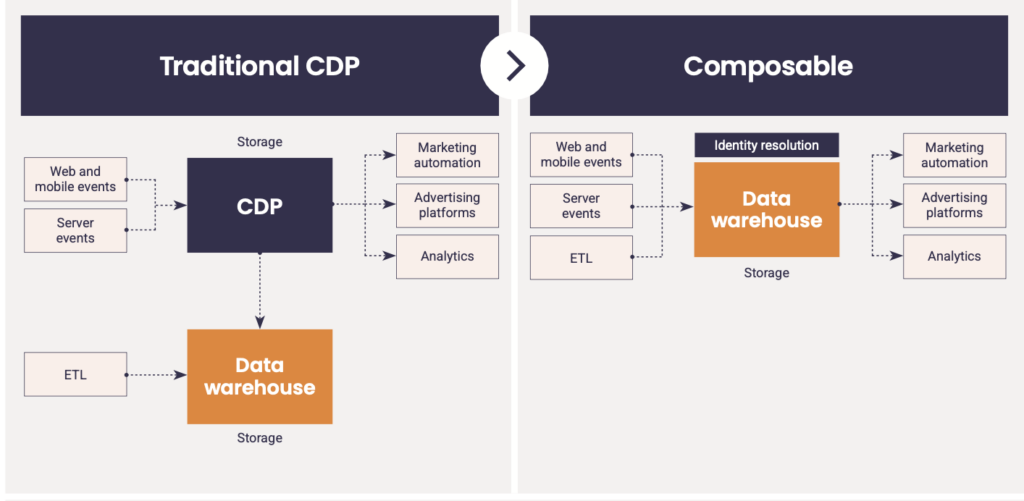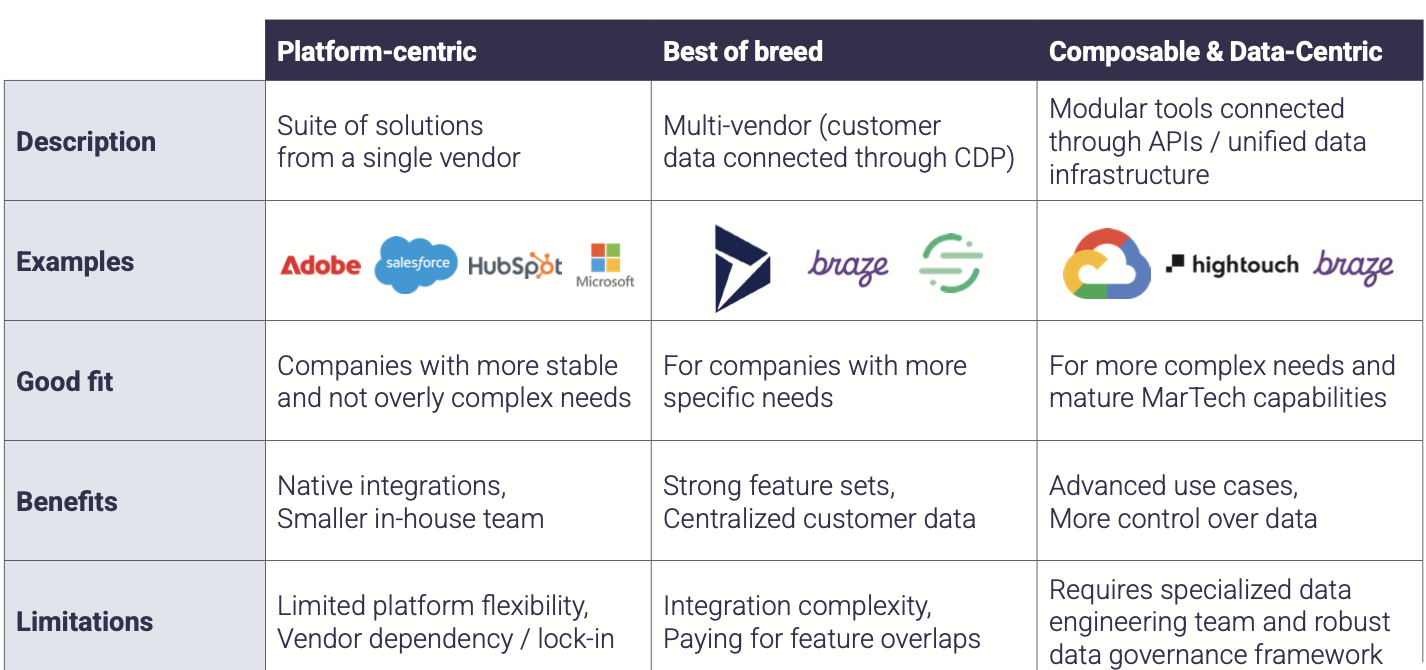Composability is one of the defining concepts in modern MarTech and enterprise architectures. But what does it actually mean in practice, and when does it make sense for your organisation?
From monolithic platforms to modular stacks
At its core, composability is about assembling your technology stack from modular components. Instead of relying on one platform or vendor to manage everything from data to activation, you connect smaller, purpose-built tools that each play a specific role. These tools are linked together through standard APIs and data flows, allowing them to work as one system.
Many organisations have previously invested in large, integrated suites. These offered consistency and a single point of control, but also introduced tradeoffs. Innovation cycles were slow, switching costs were high, and teams had to sometimes work around the platform, rather than the platform adapting to their needs.
Composable architectures turn that model on its head. You select a tailored solution for each capability, for example: segmentation, experimentation, content delivery, and integrate them based on what your organisation actually needs. This gives you the ability to evolve faster, adopt new tools without disrupting your entire setup, and scale capabilities based on proven value.

(Data centralization: Bridging silos to increase effectiveness)
What makes a stack composable
Composability in a MarTech ecosystem is built around a few key building blocks:
- A cloud data warehouse or data lake as the central data foundation
- A composable customer data platform or reverse ETL tool to activate data
- Orchestration engines to manage journeys and campaign logic
- Content platforms that deliver dynamic, personalised experiences
- Analytics and experimentation tools to measure and iterate on results
What sets composable stacks apart is that each component can evolve independently. You can replace one tool without needing to rearchitect everything. This creates a system that is not only flexible but also more resilient to change.

(Traditional vs. Composable CDPs)
Composability in practice: myths and readiness
Composability does not mean building everything from scratch, and it does not mean losing control. In fact, composable stacks require structure. Architectural governance, documentation, and a shared operating model become even more important when flexibility increases.
It is also a myth that composability means low-code or no-code. These architectures tend to work best when business and technical teams collaborate closely, with a clear understanding of data ownership, integration logic, and activation flows. So how do you know if composability is right for your organisation?
You are probably ready if:
- You already have a cloud-based data foundation
- Marketing, data, and tech teams collaborate and share KPIs
- You have defined owners for core capabilities such as testing or segmentation
- You want the freedom to evolve your stack over time without starting from zero
It might be too early if:
- Your customer data is fragmented or locked into multiple platforms
- You rely heavily on a single technology vendor for execution
- Internal teams are siloed and do not co-develop campaigns
- You lack the capability to manage integrations and data pipelines
In these cases, a hybrid approach can be a smart way forward. For example, layering a composable CDP or orchestration tool on top of an existing suite allows you to explore modular thinking without replacing everything at once.

(Architectural approaches)
To summarise
Composability in MarTech is not just about replacing technology. It is a different way of thinking about how systems should be built and evolve. It is about putting the organisation in control of its own roadmap, choosing tools based on fit rather than package deals, and enabling faster learning and iteration.
Done right, composability gives marketing and technology teams more autonomy, more speed, and more confidence to scale what works.
Want to dive deeper and learn more about composability?
Download the full guide: MarTech & Customer Data in the Age of AI
Download
Listen to our episode with Adam Greco from Hightouch: